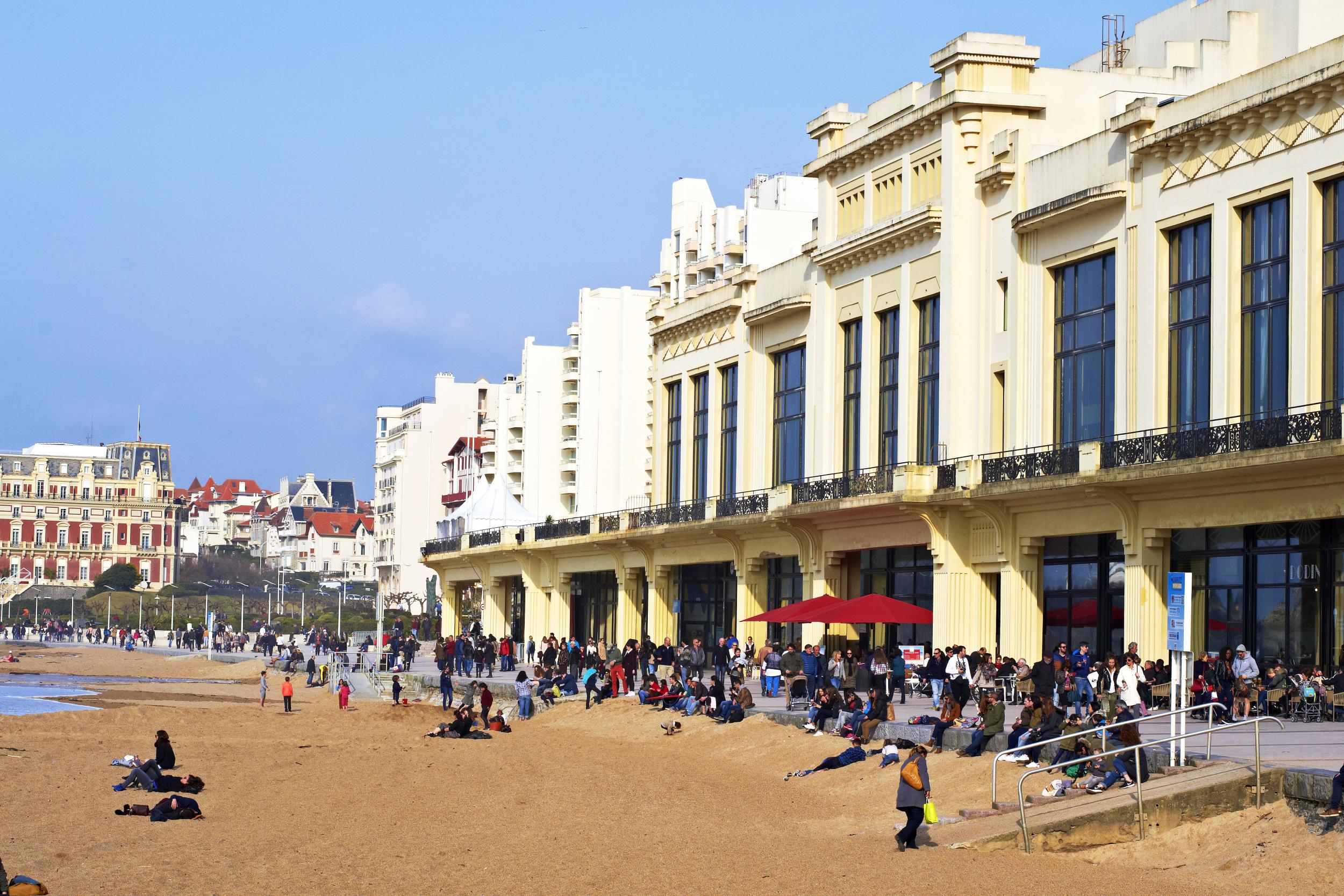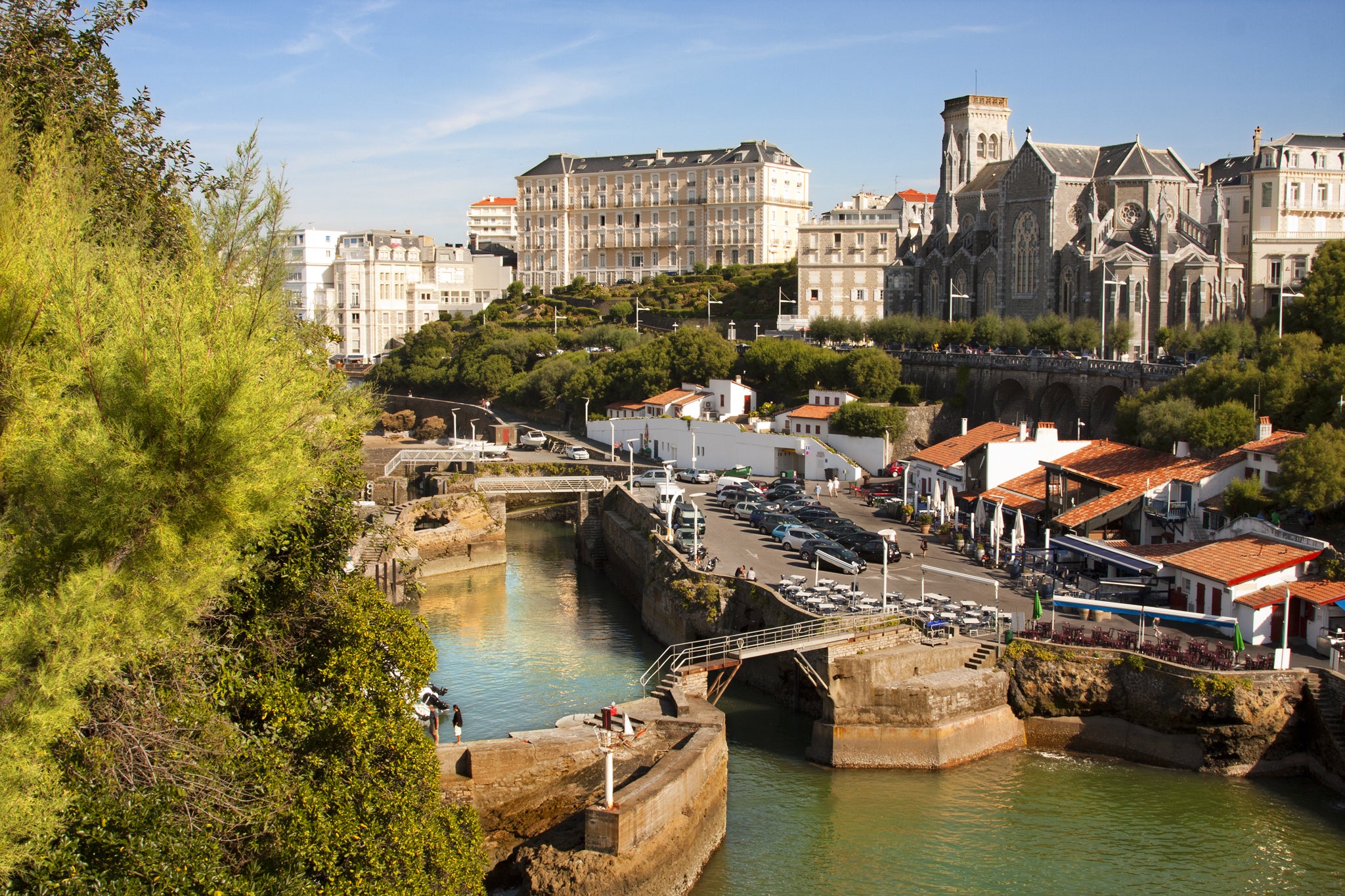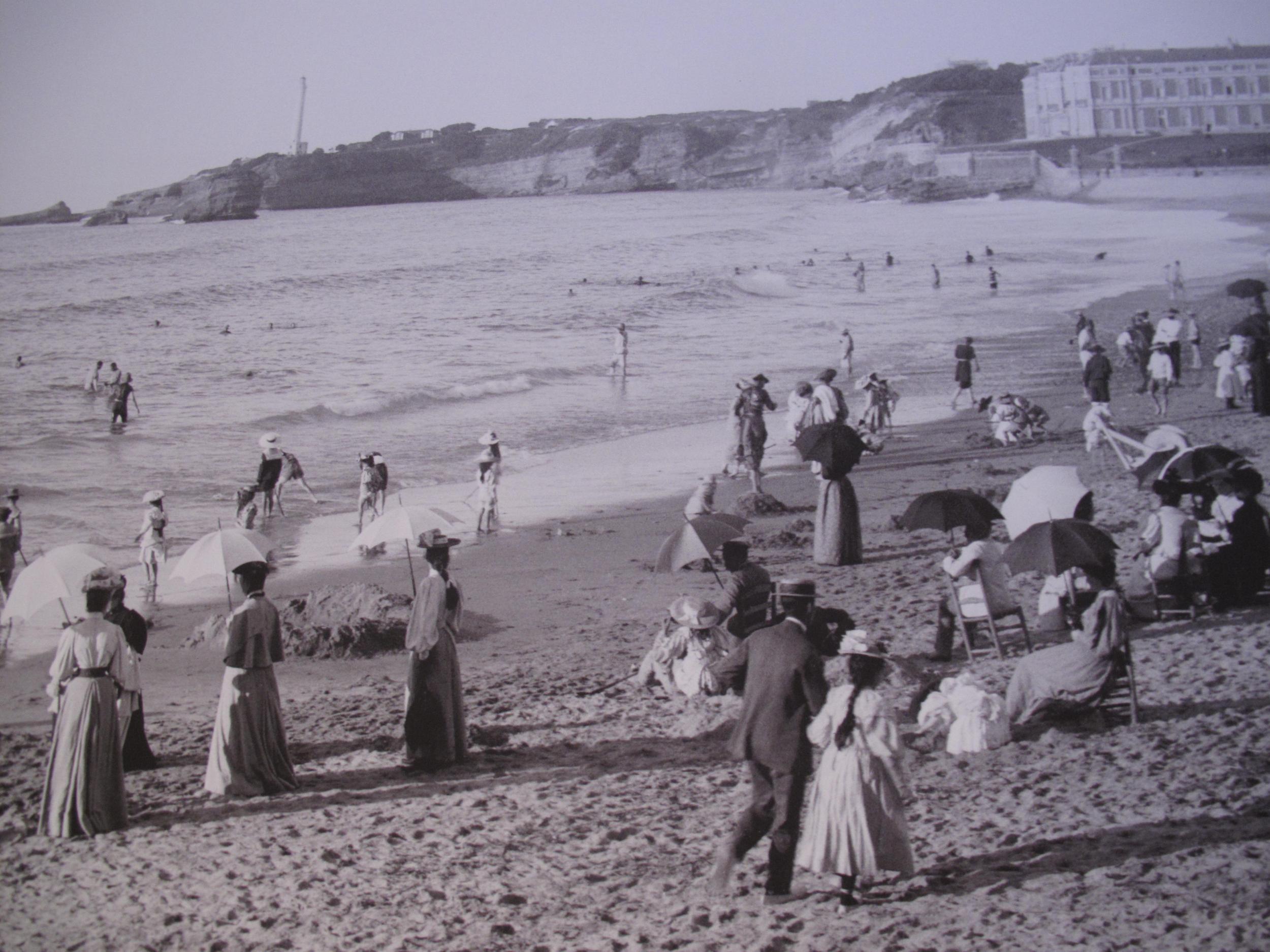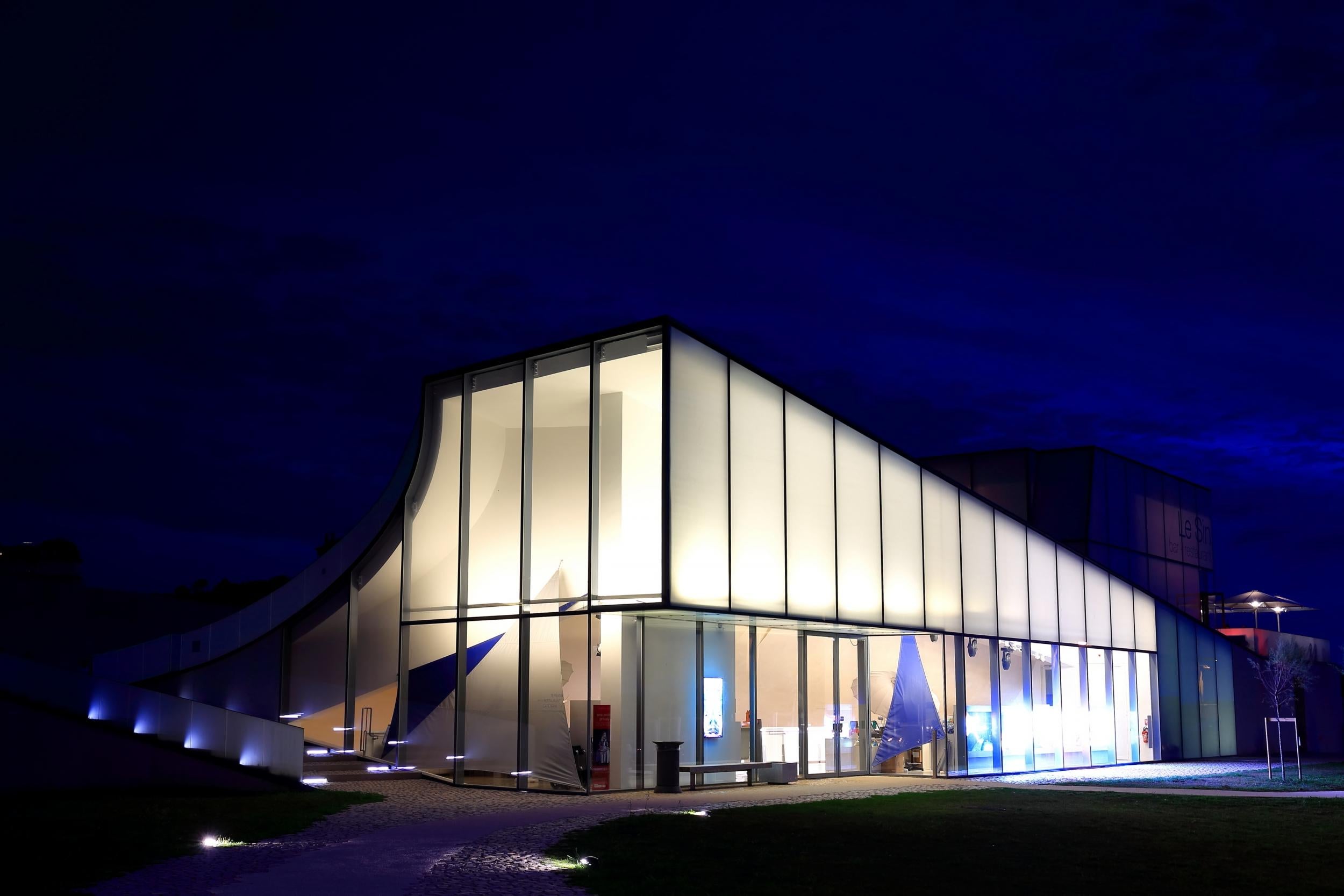The Independent's journalism is supported by our readers. When you purchase through links on our site, we may earn commission.
48 Hours in Biarritz: restaurants, hotels and places to visit
The city where Basque culture meets Gascon chic is an ideal summer destination

Travel essentials
Why go now?
With British Airways re-starting flights from Heathrow this summer, the biggest resort in south-west France is easier than ever to reach. Biarritz has its origins as a fishing port, but in the past couple of centuries it has acquired plenty of style while welcoming the rich and glamorous from France and beyond.
Touch down
BA (0344 493 0787; ba.com) flies from Heathrow; easyJet (0330 365 5000; easyjet.com) from Gatwick; Ryanair (0871 246 0000; ryanair.com) from Stansted; and Flybe (0371 700 2000; flybe.com) from Birmingham and Southampton.
Biarritz airport (1) is just two miles east of the city. Turn left out of the terminal and walk for a few minutes to find the stop for bus 14, which runs approximately half-hourly to the town centre for just €1 (or buy a 24-hour pass for only €2). It terminates close to the tourist office (2), which occupies a peach-coloured mansion beside Square d'Ixelles (00 33 5 59 41 59 41; tourisme.biarritz.fr; 9am-7pm daily in July and August).
By rail, Biarritz is nine or 10 hours from London St Pancras on Eurostar (03432 186 186; eurostar.com), requiring a change of stations from Gare du Nord to Montparnasse. Through fares are typically £250 return in summer.

Biarritz rail station (3) is inconveniently located two miles south-east of the city centre; bus 8 covers the ground every 20 minutes or so for €1.
Get your bearings
The last big resort in south-west France before the Spanish border, Biarritz decorates a serrated sweep of the Côte des Basques. The main beach is the Grande Plage (formerly Plage de l'Impératrice, until the Second Empire collapsed). Its north-east end is marked by the lighthouse known as the Phare de Biarritz (4). At the south-west end of the beach, a thumb of land sticks out into the Atlantic; this is the oldest part of Biarritz, crowding around the horseshoe-shaped Plage du Port-Vieux (5). Further south, the Plage de la Côte des Basques extends towards the Spanish frontier.
Inland, Place Georges Clémenceau (6) has the strongest claim to be the hub of the town.
Check in
Wherever you end up staying, you should certainly visit the Hôtel du Palais (7). It occupies a prime tract of seafront real estate at 1 Avenue de l'Impératrice (00 33 5 59 41 64 00; hotel-du-palais.com). It is more than merely one of France's finest hotels; it is also a location with a fascinating history. Napoléon III built a villa on the site for his much-revered wife, Empress Eugénie. It burned down in 1903, and after rebuilding, reopened as a hotel de grand luxe. The price of a double room reflects the four-star quality: around €400-€500 per night double, excluding breakfast.
The small, friendly if slightly cramped three-star Hôtel Palym (8), at 7 Rue du Port-Vieux (00 33 5 59 24 16 56: hotel-palym-biarritz.fr) has double rooms for €93 or less, excluding breakfast.
The two-star Hôtel Le Bellevue (9) at 5 Avenue Edouard VII (00 33 5 59 24 17 07; hotel-bellevue-biarritz.com) has an excellent location by the Grande Plage, which helps explain its fairly high room rates of around €100 double, excluding breakfast.
Day one
Take a view
The best place from which to appreciate the scale and diversity of Biarritz is on the Plateau de L'Atalaye (10), high above the Plage du Port-Vieux. Then walk out across the footbridge to the Rocher de la Vierge (11), an outlying rock that supports a statue of the Virgin Mary and provides an excellent view of the magnificent coastline.
Next, at the art deco Aquarium de Biarritz (12), you can gaze into the world beneath the water (00 33 5 59 22 75 40; aquariumbiarritz.com). The aquarium - formerly the Musée de la Mer - has more than 5,000 creatures and a 40-foot coral reef. Get there at 10.30am (or 5pm) to see the seals being fed. In July and August, it opens 9am-midnight daily, admission €14.50.
Lunch on the run
The main street running inland from the Plage du Port-Vieux (5), Rue du Port-Vieux, is crammed with cafés and restaurants. At no 12, Le Coupe Faim (13) does a roaring trade in salads, sandwiches and crepes, with Basque xurros (churros - swirls of deep-fried dough) if you have room for dessert.
Cultural afternoon
The Musée Historique de Biarritz (14) on Rue Broquedis (00 33 5 59 24 86 28; musee-historique-biarritz.fr) occupies a former Anglican church, St Andrews, built by the British in 1876. It has been transformed into an exhibition space telling the story of the town. The porch alone is a masterpiece, constructed to commemorate the men who fell in south-west France in 1813 and 1814, during the Napoleonic Wars. Inside, it feels like a shrine to Empress Eugénie, though our Royal Family enjoys a strong showing, with an account of Queen Victoria's visit to Biarritz in 1889. It opens 10am-1pm and 2.30-6.30pm from Tuesday to Saturday, admission €4.

Go to church
The two most notable churches are open to visitors only on Saturday afternoons. The Chapelle Impériale (15) on Avenue de la Reine opens only 2-6pm, for guided tours that cost €3. Take Rue de l’Université Américaine to the Russian Orthodox Church (16) at 8 Avenue de l’Impératrice. Saturday from 3pm to 6pm is the only time non-worshippers are welcomed inside the church - which is officially named for "Alexander Nevsky and the Protection of the Mother of God".
An aperitif
Biarritz is perfectly placed for a sundowner. On the rooftop bar of the Hôtel Les Baigneuses (17) at 14 Rue du Port-Vieux, where a glass of rosé is a very reasonable €4 and a small beer is even cheaper.
The Café de la Grande Plage (18) is actually the beach-level floor of the Casino. On the convivial terrace, you can order oysters to accompany your drink - though prices for both are among the highest in town.
Dine with the locals
The area around Les Halles Centrales (19), the municipal market, is full of appetising options. Book in advance for Le B2 (20) at 5 Rue du Centre (00 33 5 59 24 34 66), where a short menu offers simple, tasty dishes based on locally sourced seafood and meat - such as fillet steak with Basque peppers and mashed sweet potato. Starters are under €10, mains €20.
Day two
Out to brunch
Les Halles Centrales (19) is also the best place to forage for coffee and croissants on the sabbath, with Bar Jean (21) at 5 Rue des Halles opening at 8.30am.
Take a hike
Sunday morning is an excellent time to appreciate the remarkable mix of architecture in Biarritz before the crowds gather. From the east end of Place Georges Clémenceau (6), go north along Avenue Edouard VII, which passes the Casino (18) and a small park on the left also named after the early 20th-century British monarch. The road becomes the Avenue de l’Impératrice, with the Hotel du Palais (7) dominant, and as you head north there are indulgent villas on both sides of the road.
At Mirasol (22), note the startling stained-glass façade on a maritime theme, and bear left along the Sentier des Vagues ( "path of the waves"). The path leads to a flight of steps, and halfway down you round a bend to get a tremendous view of the bay and the rocks scattered in the water – notably the hollowed-out Roche Ronde, resembling the head of a whale emerging from the waves.
A walk by the beach
Descend to the foot of the steps (23) and walk back along the Allée Winston Churchill, which runs beside the Grande Plage. Thread beneath the terrace of the Hôtel du Palais (7), then turn to admire the expansive grounds. Continue along the promenade, past the towering Casino (18) and a scattering of offshore rocks. Wander through the tiered gardens, planted with the city's characteristic fluffy tamarisk trees, to reach the Port des Pêcheurs (24) - a tiny fishing village crammed with crampottes (fishermen's huts).
Window shopping
Art and crafts from the nations of French West Africa are on sale at Le Caméléon Couleur d'Afrique (25) at 3 bis Rue du Port-Vieux, open 11am-10.30pm daily in July and August. At the inland end, Rue du Port-Vieux becomes Rue Mazagran, and a long, meandering thoroughfare of shops begins, stretching along via Place Sainte-Eugénie to Place Georges Clémenceau (6) - venue for the Galeries Lafayette (26) department store. It opens 10.30am-8pm on Sundays, from 9.30am on other days.
Take a ride
A network of free buses shuttles around Biarritz, but the times are erratic; ordinary buses are more reliable and very cheap (€1 per ride or €2 for 24 hours). Bus 10 or 13 will take you south to the Milady district and the Cité de l’Océan (27) - the spectacular new addition to Biarritz, celebrating the city’s link to the sea. You learn about Basque fishermen’s exploitation of the North Atlantic, from Spitzbergen to Newfoundland, and the transformation of Biarritz into a glamorous resort.

The icing on the cake
For a different perspective on the Côte des Basques, continue south to the fishing port of St-Jean-de-Luz (28), an antithesis to the glitz of Biarritz, with a pleasant central square ideal for a drink and dinner. By public transport from either the city centre or the Cité de l’Océan, take bus 13 to its southern terminus and then walk for about 20 minutes to Guéthary station (29), from which St-Jean-de-Luz is just seven minutes by train.
Join our commenting forum
Join thought-provoking conversations, follow other Independent readers and see their replies
Comments